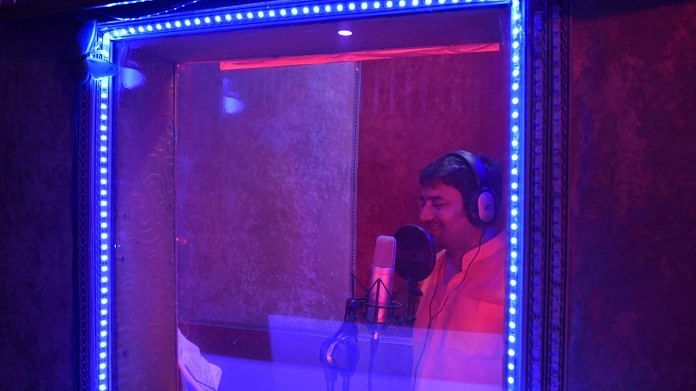There was a time when the destination of many a Bhojpuri musical dreams was Mumbai. The recording studios and talent-spotting infrastructure of Bollywood aided the Bhojpuri boom. But now, Delhi is the new Bhojpuri music capital with mushrooming recording studios and a slew of migrants who want to become the next YouTube star.
A walk through the serpentine lanes of east Delhi’s Laxmi Nagar reveals many of the over 200 recording studios and about 500 Bhojpuri music labels. The studios are inconspicuously operating in cramped houses and are teeming with migrant labourers who come to Delhi from Uttar Pradesh and Bihar. They have two things in mind – a job and a YouTube dream.
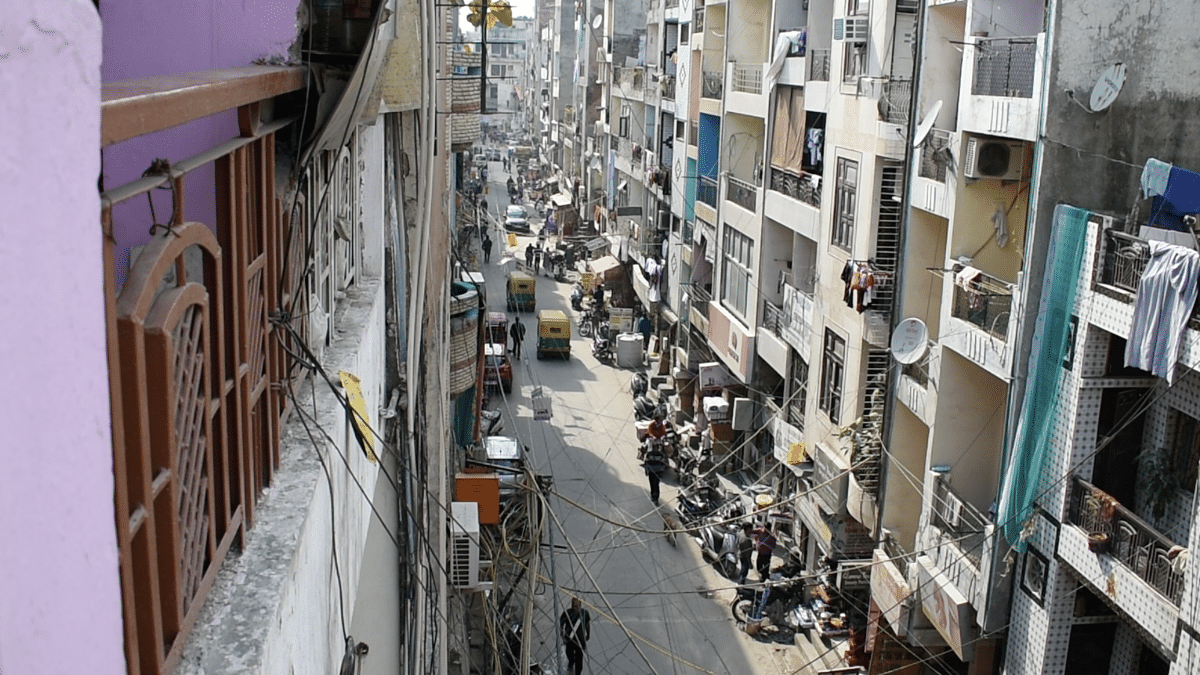
As cassettes and CDs gave way to YouTube and millions of Jio-enabled over-sharers glued to the screen, the dynamics of the music industry changed and the entry barrier to stardom dropped. Anybody can now dream of becoming a viral Bhojpuri star.
And Delhi’s proximity to UP and Bihar, coupled with the earning opportunities in the city, has made it a fertile ground for the ambitious migrant labour.
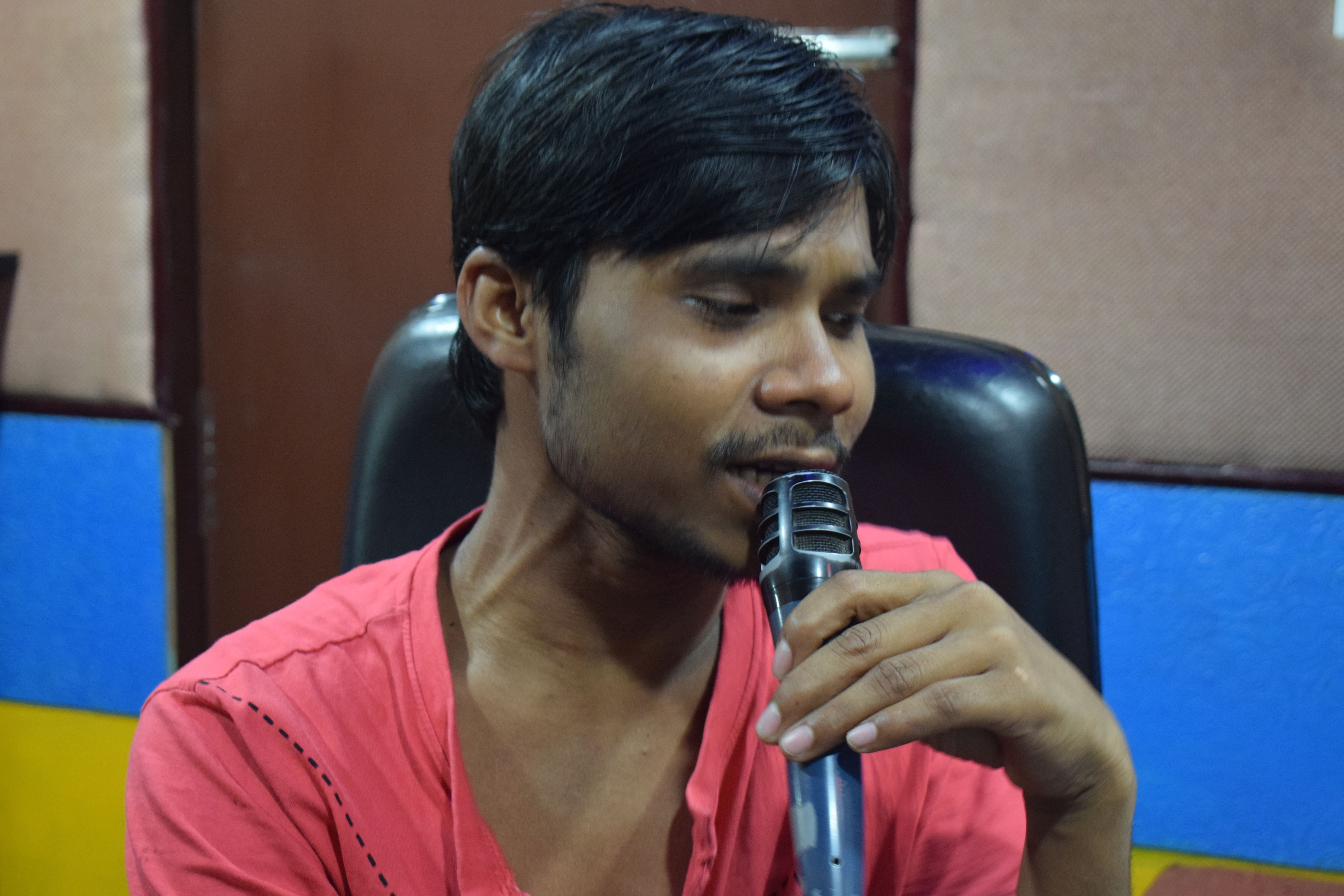
Deepak Bihari, a young man from Bihar, hums lyrics of the famous Bhojpuri song “Raat diya buta ke piya tune kya-kya kiya (What my beloved husband did at night after switching off all the lights)” by Bhojpuri star Pawan Singh. Bihari is a singer, lyricist and a music composer. “My first song Roi roi likhatani patiya ho garnered more than four million views on YouTube.” He ran away from home when he was 10 and now is a caretaker at one of the studios.
This exploding industry solely revolves around the metrics of views, likes and shares. And you don’t have to be a star to get the likes and shares.
The recording studios
On a balmy Sunday morning, five young aspiring migrants walk into the dimly lit Raj Studio in Ganesh Nagar, east Delhi, to get their songs composed. The modest studio has a desk with a computer and a harmonium, a recording room with a microphone and a music stand.
D.N. Mishra, the studio’s owner is ready for the peak weekend traffic. “Today is Sunday, so about 30 to 40 people will turn up to record songs,” Mishra says while chewing on a paan. “The Bhojpuri music scene is rapidly making its mark in Delhi,” he says. His clients come all the way from UP, Bihar, while some are residents of Delhi.
Recording studios in Mumbai cater to only the well-known Bhojpuri singers. Plus, the cost of living and production in Mumbai is too high for aspiring newbies. In Delhi, a song is recorded and produced for as low as Rs 2,500 and the studios are more welcoming.
A few steps ahead, there is another music studio, RCM Bhojpuri, where Amit Ashique, a young man from Bihar, has come to get his songs recorded. His songs go under the Bhojpuri label ‘Bhojpuriya Masti’ run by Nutan Films in Dwarka Mor. “The road to becoming a singer in this industry is tough. Take Pawan bhaiya (Pawan Singh) and Khesari bhaiya (Khesari Lal Yadav) for example – they are our inspiration but they didn’t become stars overnight. We too are trying for the same,” says Ashique.
Also read: In the Bhojpuri music world, Modi has become ‘balma chowkidar’ this election season
Unlike other aspiring singers who work as labourers in factories, Ashique is completely devoted to his dreams. With many of his songs now crossing the million-view benchmark, he happily calls himself an “emerging star”.
“I have not been able to visit home for about eight months now. I used to go home more often when I was not this popular,” says Ashique.
Vikas Raj, a 26-year-old graphic designer, from Motihari district of Bihar seeing the expanding Bhojpuriya industry in Delhi, learnt the basics of music recording and opened a new studio –Ambey Studio– in August 2018 in east Delhi.

He and his cousin are now preparing to open a second recording studio. “Today, the scope of this industry is so much that even if we open three-four studios, it won’t be enough,” Raj says.
It takes Rs 6-7 lakh to open a studio, but the returns are more than the investment, he says.
Producers who own YouTube labels such as Akash series, Bhojpuriya Masti, RCM Hit, get their share of profit from the views and likes.
Suraj Sawarka, from Arrah district of Bihar, owns a YouTube label called Rangabaaz Music. Whenever he meets a new person, he makes sure they subscribe to his YouTube channel.
“The subscribe button is our daal, roti, chawal,” he says. For three lakh views per song, YouTube gives the producers Rs 6,000-6,500.
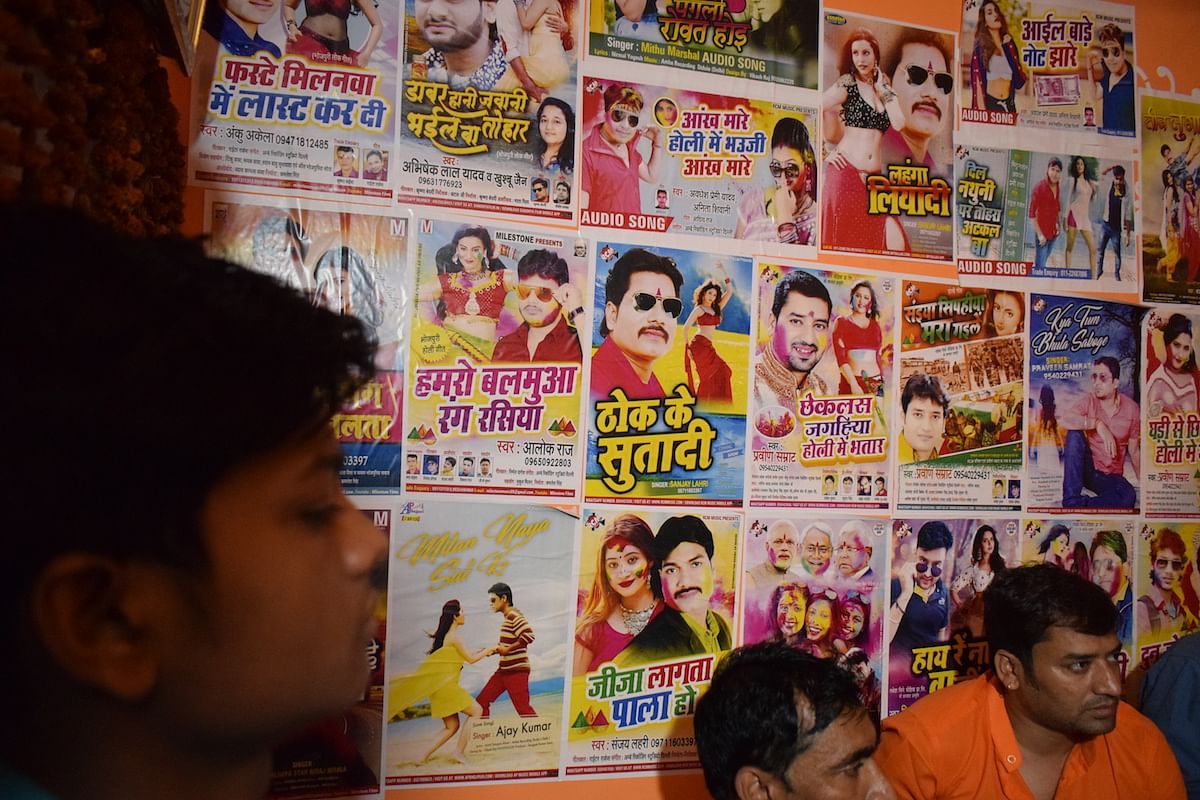
Neophyte singers never get paid for their songs until they prove their mettle and get a million views. So, they have to invest their own money to get songs recorded. Young migrants from UP and Bihar take up jobs as labourers in factories or private companies to sustain themselves. With the hope of getting popular, they keep on spending a chunk of their income on their pursuit of stardom.
Suraj Sawariya, who works in a shoe factory in Narela, invests at least Rs 4,000-5,000 per month with the hope that one day his songs will get a million views and he will start getting offers from the famous labels.
Also read: The Hindu & Muslim DJs behind India’s hate soundtrack
The dreamers
These Bhojpuri singers reside in various pockets of Delhi where industries operate.
Praveen Samrat, now an established Bhojpuri singer, recalls his days of struggle. “Earlier, one had to record a complete album, which used to have eight songs and required Rs 40,000-50,000. Now, because of YouTube, we can record just one song at a time,” he says.
However, YouTube has a few thorns too. The competition is fierce. In a bid to produce more songs, very often, the quality is compromised and tunes are stolen.
But the rags to riches story of stars like Pawan Singh and Khesari Lal Yadav continue to fuel the dreams of many.
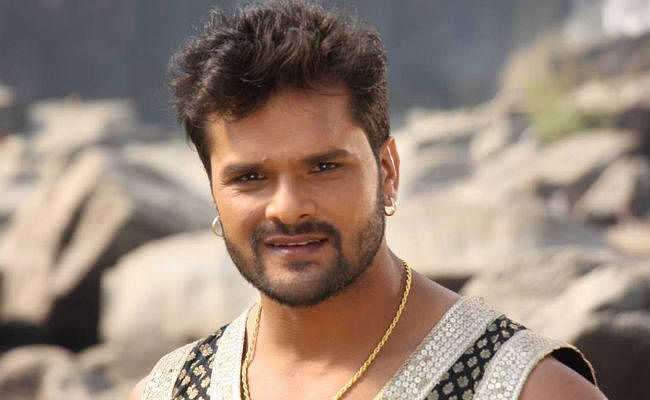
Khesari Lal sold litti-chokha in Delhi’s Okhla area but then his songs like “Premika Mil Gail” started garnering millions of views. He has now joined the list of celebrities who have appeared on the famous Kapil Sharma show – Comedy Nights with Kapil.
And Pawan Singh’s famous “Lollipop Lagelu” with more than 92 million views has shattered all previous records.
After stardom
As soon as a singer starts gaining popularity, stage show offers start pouring in—that becomes their source of income.
But the exploitation of these new singers and fledgeling stars is rampant. Most of them lack formal education and do not understand the commercial aspect of becoming a Bhojpuri music star.
Singers like Amit Ashique, despite being an emerging star, still survives on a meagre amount of Rs 13,000-15,000 a month. Most of the profit from his videos go to the producers.
But Ashique isn’t complaining much – now several Bhojpuri migrants come to him for tutelage. He says he receives around 200 calls a day. But he makes it a point to emphasise that he doesn’t save the phone numbers of his women fans.
Also read: The rise of the communal hate soundtrack in India
However, popularity has not been just benign to him. With popularity came a lot of hate.
“Very often, I receive threats from people who claim my songs are vulgar but they are actually jealous,” Ashique says.
In bustling Delhi, Amit Ashique is just one of the few who has managed to make some sort of a mark in the Bhojpuri music industry. Others keep heading to recording studios on weekends with hope in their hearts and YouTube on their phones.
The authors are freelance journalists. Views are personal.


